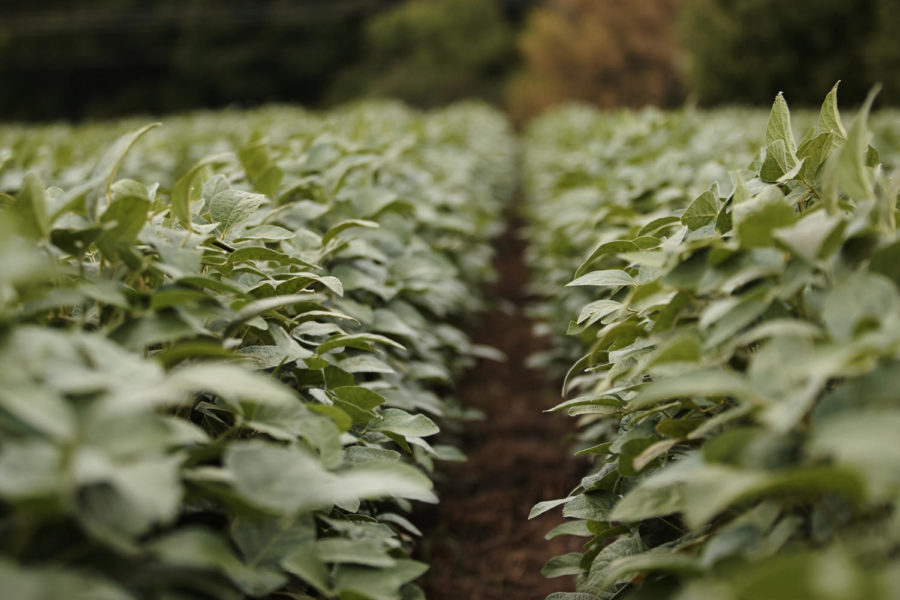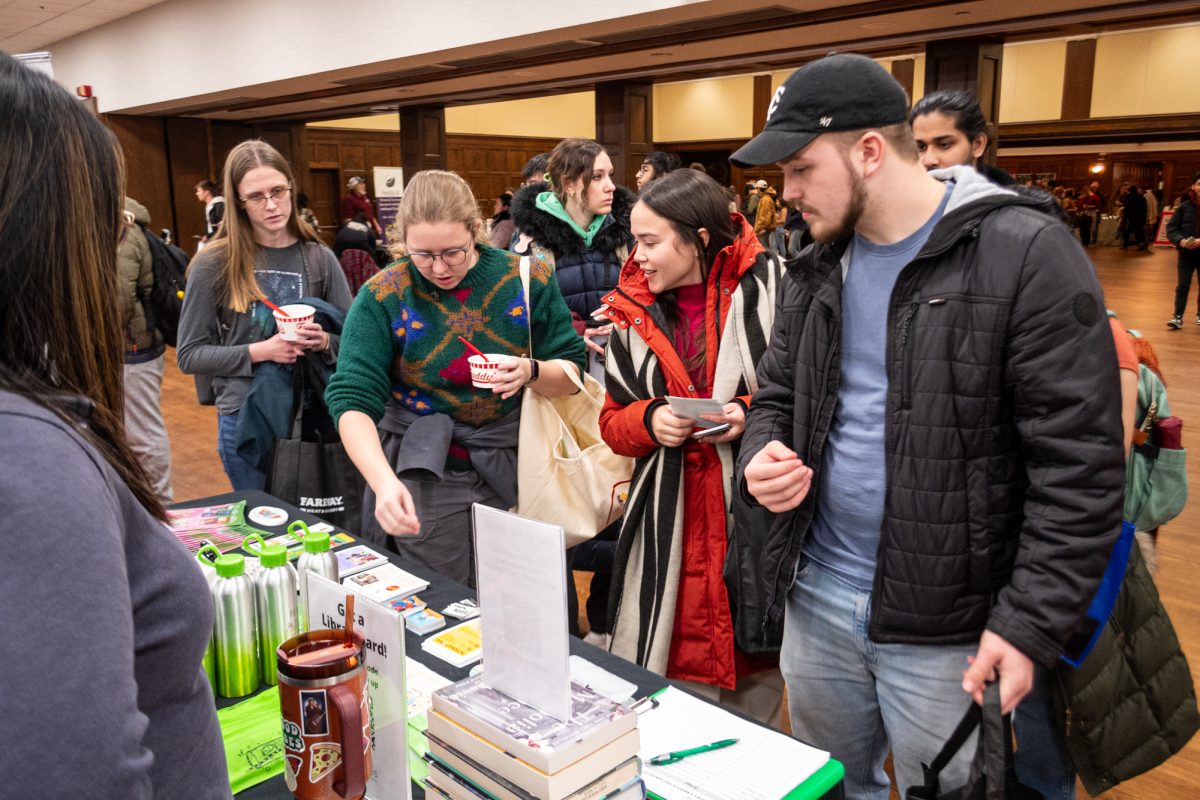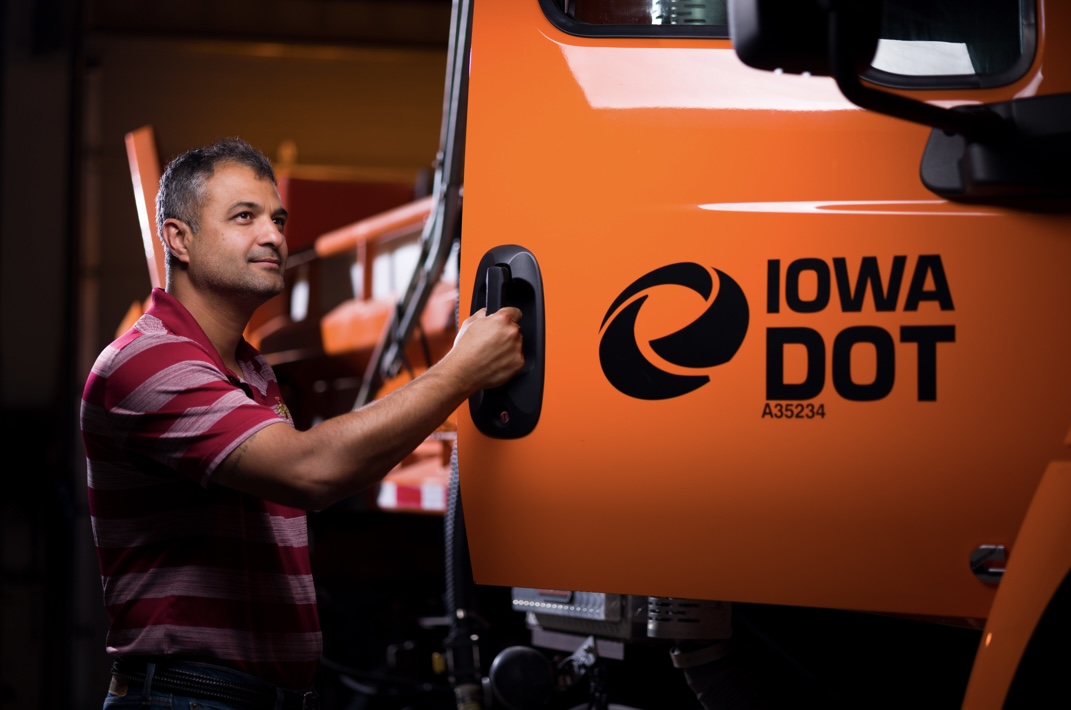Iowans may know the land surrounding them is resilient, performing at a high rate compared to regions across the globe, according to the U.S. Department of Agriculture.
What is not widely known is what Iowa farmers do with the crops they do grow and why they do not grow alternative crops, like tomatoes, grapes and wheat.
Iowa farmers choose to plant corn and soybeans at a nation-leading rate, with no indication of slowing down.

In 2022, Iowa harvested nearly 2.5 billion bushels of corn and nearly 600 million bushels of soybeans, ranking first and second in the U.S., respectively.
“When you think of the number of acres that are producing a huge amount of product in the state of Iowa, all of that product coming off, if the world didn’t have it, the world would be hungry, seriously hungry,” Bobby Martens, an associate professor of agricultural economics at Iowa State, said.
When tasked with feeding major portions of the world, the state chooses corn and soybeans, with the two crops making up 94% of 24 million acres of growing crops, according to a 2021 study conducted by Iowa State University.
According to Chad Hart, a professor in agriculture economics at Iowa State, crops are picked for a region based on a combination of being agronomically suitable and also economically viable.
“It’s a crop that’s agronomically suited here in Iowa, it’s a crop that usually needs consistent rainfall,” Hart said about field, or dent corn as it is often called.
Hart said corn is grown in Iowa because of accommodating rainfall amounts.
Martens added that corn and soybeans are more disease tolerant than many other crops, and have a tolerance for high humidity.
But why corn and soybeans? And where do these plants end up? Surely it would be too much to eat all of it.
Dent corn, which makes up almost all corn produced in Iowa, is edible after being processed, including using it to make starches, sweeteners, corn cereal, corn oil, high fructose corn syrup and thousands of other products.
Soybeans are consumed dried, roasted, as soy grits, in soy milk or soy flour, as tofu, vegetable oil and more.
Both products are also commonly used to feed livestock such as cattle, hogs, chickens and other livestock, the fate of 39% of corn produced in the U.S. and more than 70% of soybeans, according to the U.S. Department of Agriculture.
Not just food
Hart said Iowa has flexibility in the two crops it grows, using the products for more than feeding people and animals, but for more, which makes the crops of higher value.
“The reason we end up doing corn and beans, that dominate the landscape now, is because they’re incredibly flexible,” Hart said. “You can think they both start as livestock feed, but they do more than that. With corn, we figured out how to make a fuel out of it, we figured out how to do fibers of plastics out of it, same thing with the soybeans.”
As Iowa has grown infrastructure and selectively bred and genetically modified corn and soybean plants, there has been a push to do something with as many of the plants as possible, not just the actual beans and kernels.
“The globe demands corn and soybeans, we’re not telling folks that they have to use products that come from corn and soybeans,” Martens said. “That has been developed over time, I don’t believe that we’re telling anyone that they have to use products that come from corn and soybeans, they are comparatively better off using those.”
Research at places like Iowa State University helps find additional uses for these crops.
“You’re always in this game if you’re growing a commodity like corn, of looking for what’s the next demand source we could have out there?” Hart said.
Research has led to finding uses for corn proteins, starches and sugars to produce things such as cardboard packaging and paper goods, shoe polish, makeup, printing inks and more.
A primary use of corn, making up 27% of U.S. corn usage, is to produce ethanol and fuel.
The production of biofuels has been a result of various, often bipartisan, pieces of legislation aiming for energy independence and to reduce the carbon footprint caused by combustion engines.
“Did we have to do it? No. But, could it make sense for us to do it, and the answer was yeah. We had a lot of corn,” Hart said of producing biofuels.
Iowa used to produce a significant amount of oats, even in the last century, which were primarily used to feed horses. Now, livestock often consume corn and soymeal in replacement of oats.
With the horses eating oats being used for transportation, Hart joked Iowa has been producing biofuels for quite some time.
“We’ve always been a biofuel state, it’s just that this biofuel you feed directly to an animal, these biofuels you’re feeding directly to machinery,” Hart said.
The United States produced more than 57% of the ethanol consumed worldwide in 2022.
“To lose that ethanol industry now would be really tough for agriculture, I mean that would kind of be like saying I am in the business of shoe making and everyone is going to give up their feet,” Martens said.
Mindy Devries-Gelder, an assistant teaching professor in agronomy at Iowa State University, said other countries also use parts of their harvest for ethanol, but those countries do not always use corn or soybeans.
“It is pretty natural that when you have something you can produce a lot of you start looking for how else can I use this product,” Devries-Gelder said and added those countries often use sugarcane and sorghum to produce ethanol.
If not Iowa, then who?
Soil resilience and performance of the soil combined determine how arable land is.
The three regions with the most arable land are the American Midwest, Argentina and Brazil, and Ukraine and Russia.
Crop production in Iowa is crucial to how the rest of the world eats and operates, according to the economists.
“I think it’s about how do we use our local acres, our local capabilities in a global perspective to be able to help the most people be able to have access to food,” Martens said.
Hart said Iowa can grow crops at a significantly higher rate than other areas around the globe.
“Not everywhere in the world can grow significant crops. In reality, there are very few places that can produce more than what they need, but there are a few,” Hart said, pointing out the green spots on the map.
Peter Ralston, a supply chain associate professor at Iowa State University, pointed out two main factors that contribute to how Iowa handles agriculture: rate of consumption vs. production and accessibility to modes of transportation.
“From a consumption standpoint, we’re not going to consume as much as we produce,” Ralston said.
Given Iowa’s central location, truck, rail and river transportation are all frequently used. Iowa can send its commodities away easier than many other locations, according to Ralston.
“What a tremendous advantage Iowa has to be able to ship a lot of stuff on the Mississippi River, Missouri River, both ends of the state are kind of bookended by rivers… A lot of rail that is here now is because people went east to west. The Mississippi River flows south, so you’re able to send a lot of stuff to New Orleans and the Gulf of Mexico,” Ralston said.
Additionally, Ralston said access to interstate highways and the Iowa Department of Transportation recognizing the importance of roads to get goods out of the state is crucial for trade.
“One of the values or key attributes that Iowa has that other places don’t, is our connectivity to a lot of other transportation and infrastructure that makes sense to transport,” Ralston said.
Ralston emphasized the rails heading east and west out of the state, the two major interstates going through the middle of Iowa each way and the other interstate routes in the state and the opportunities for river transportation.















Dave | Mar 21, 2024 at 10:08 am
Forcing ethanol into fuel has been mandated for long enough. It’s time for ethanol to stand by itself in fuel or have corn used for something else. I’d much rather see corn used to feed the world via barge and ship, than ethanol transported via rail car to everywhere from New York to California to be burned with gasoline.